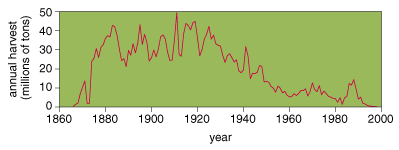forum
library
tutorial
contact

Idaho History: Most Pioneers
Thought Idaho's Fish Were Limitless
by Arthur Hart
Idaho Statesman, August 14, 2011
|
the film forum library tutorial contact |

|
Idaho History: Most Pioneers
by Arthur Hart
|
First in a series.
 Before Bonneville Dam was completed on the lower Columbia in 1937, salmon ran unimpeded from the Pacific Ocean up the Columbia to the Snake and to all of its tributaries to their spawning places. Early explorers were impressed by the vast numbers of salmon in the Boise, the Payette, and the Weiser rivers.
Before Bonneville Dam was completed on the lower Columbia in 1937, salmon ran unimpeded from the Pacific Ocean up the Columbia to the Snake and to all of its tributaries to their spawning places. Early explorers were impressed by the vast numbers of salmon in the Boise, the Payette, and the Weiser rivers.
Trout fishing was popular then as now, and for some, it was a business. Regular accounts in the Idaho Statesman describe it for us. Two days before Christmas in 1869, the paper reported: "Mr. Dwyer brought in from Canyon Creek last night quite a lot of nicely frozen mountain trout. He disposed of them rapidly at 50 cents per pound. A lively little business might be kept up by supplying this market with fresh fish."
In March 1870, "Mr. McCarthy, of Snake River ferry, informs us that fishing by means of concussion is becoming quite a popular as well as amusing pastime at and below the ferry. One blast of giant powder near the lower crossing last week turned up over 50 pounds of fine salmon trout."
Today's sports anglers probably cringe at calling this an "amusing pastime," especially because these salmon trout were what are now known as our treasured steelhead. The Statesman story went on to instruct readers in exactly how to fish by concussion.
In May 1872, a fishing expedition by a group of Boise's "good old boys" was described as follows: "Bob Louthan, Bert Griffin, and John A. Post, having resurrected a quantity of worms, left yesterday afternoon for Rattlesnake Creek, to give the trout in that vicinity a treat. They will be absent four or five days and Jim Slater will act as their agent in Boise City, having kindly volunteered to keep them in worms during the raid. Sundry jugs and bottles were included in the commissary, which were, of course, filled with bait."
By May the weather was warm enough that trout caught as far away as Rattlesnake Station, north of present-day Mountain Home, would have spoiled before they could be brought back to Boise. The lack of ice or any other way of keeping fish from spoiling explains the profligate waste reported from early fishing expeditions like this one. Fish caught closer to town regularly supplied local restaurants. In 1874, Hart's Exchange Hotel was "keeping a man employed in fishing constantly."
Placer mining had an impact on fish, as this item in the Statesman in March 1885 shows, when anglers were advised that there were "plenty of salmon in Boise River above More's Creek where the clear water commences."
The creek was so muddy and poisoned with mercury that salmon had to struggle beyond its mouth and on upstream to find gravel beds suitable for laying their eggs.
In November 1887, the paper reported, "We are told that salmon are a drug in the market at the mouth of Boise River at two cents per pound. An agent of the Statesman happening along there a few days ago induced a fisherman to haul a load to this town. He was afraid to bring more than six hundred pounds for fear of glutting the market. These were sold for ten cents per pound in less than an hour."
A year later, "Another large wagon load of salmon was brought in from Snake River yesterday. No trouble to dispose of them, for a nicely baked salmon is as delicious as a roast chicken. These were the largest we have seen this year."
The Caldwell Tribune reported in July 1889 that "the irrigating ditches are full of fish. Our law makers made a great mistake when they attempted to protect fish by law at the last session. There are more fish destroyed by irrigating ditches than by seines, dynamiting and all other causes combined."
Tribune publisher Frank Steunenberg, who would become governor of Idaho in 1897, was not opposed to legislation protecting fish but thought the toll taken by irrigation systems had been overlooked. He favored installing screens on the headgates at the mouth of canals.
In October of that year Gov. George Shoup told the Idaho Statesman that both branches of the Boise River, with all their numerous tributaries, were well adapted to trout culture.
"From these may be excepted the main stream of Boise River below the mouth of More's Creek, which stream drains the placer grounds of the Boise Basin."
The U.S. government, which had been stocking American streams with hatchery fish for some years, had not yet sent any to Idaho Territory.
Next week, I'll share more fish stories -- all true.
Related Pages:
Keynote Speech by Don Chapman, February 2011
Resolution on the Role of Dams and Conservation of Snake River Salmon, Steelhead, Pacific Lamprey, and White Sturgeon Western Division of the American Fisheries Society, June 2011
learn more on topics covered in the film
see the video
read the script
learn the songs
discussion forum
